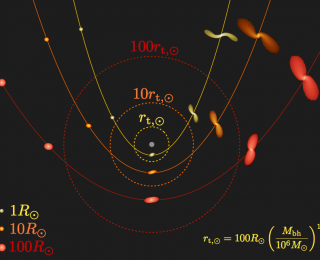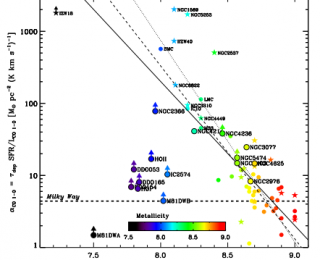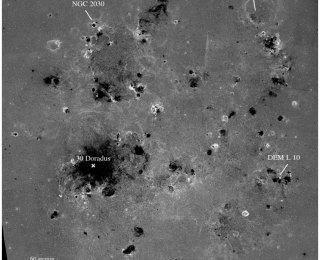
by Nathan Goldbaum | Jun 16, 2012 | Daily Paper Summaries
One possible way to directly infer black hole properties is by observing the sort of event discussed in today’s paper: the tidal disruption of an individual star after a close approach to a supermassive black hole.

by Nathan Goldbaum | May 19, 2012 | Daily Paper Summaries
While the known gas in the Milky Way’s halo cannot supply enough gas to fuel star formation, what about the gas we haven’t observed yet?

by Nathan Goldbaum | Apr 21, 2012 | Daily Paper Summaries
Today, I’ll be discussing new results from the Panchromatic Hubble Andromeda Treasury (PHAT) survey.

by Nathan Goldbaum | Mar 24, 2012 | Daily Paper Summaries
It’s an unpleasant fact of galactic astrophysics that most of the molecular gas in nearby galaxies is completely undetectable.

by Nathan Goldbaum | Feb 21, 2012 | Daily Paper Summaries
Title: The Optical Depth of H II regions in The Magellanic Clouds Authors: E. W. Pellegrini, M. S. Oey, P. F. Winkler, S. D. Points, R. C. Smith First Author’s Institution: Department of Astronomy, University of MichiganIt’s a common theme on astrobites that massive stars play a far more important role in galaxy evolution than one might casually assume based on their numbers alone. One of the main reasons massive stars are so important is their copious production of radiation that can ionize hydrogen gas. These energetic photons can photoionize and photodissociate atomic and molecular gas, creating hot, ionized gas that will not collapse to form new generations of stars. The hot, overpressured gas created by ionization, which astronomers refer to as an H II region, drives an ionization front capable of sweeping up and stirring gas throughout a star forming region. For particularly massive star clusters, which may contain hundreds or thousands of massive stars, the ionized region surrounding the central cluster, can extend for many hundreds of parsecs, visible to us as beautiful nebulae, like the 30 doradus star forming region in the Large Magellanic Cloud (at right). Massive clusters can also directly ionize intergalactic space, producing the diffuse ionized IGM that we know has been in place since the universe was about a billion years old. Today’s astrobite takes a close look at our nearest galactic neighbors, using a novel technique to infer the state of ionized gas and ionizing photons the Magellanic Clouds.Pellegrini and collaborators make use of imaging of the Magellanic clouds in narrowband filters centered on two emission lines of oxygen and sulfur. These particular emission lines are produced when...





